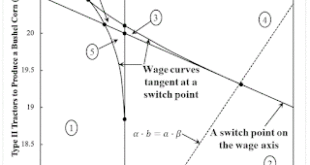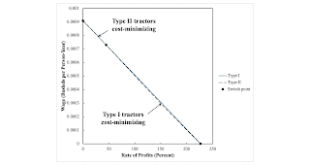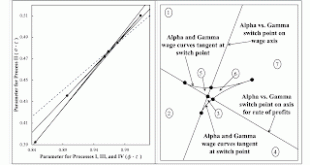Table 1: Lower Rate of Profits around a Switch Point Tradional Marginalist Story'Perverse' Marginalist Story Traditional Austrian StoryGreater net output per workerSmaller net output per worker More roundabout techniqueMore roundabout technique Switch pt. in region 2, 1st in region 52nd switch point in region 3, 2nd in region 6 'Perverse' Austrian StoryGreater net output per workerSmaller net output per worker Less roundabout techniqueLess roundabout technique 1st in region 3, 1st and 3rd in...
Read More »Robert Lucas On Recessions As Workers Choosing To Take Long Vacations
Why, under capitalism, do periods of persistent unemployment arise? Robert Lucas says the problem is to explain why workers do not to want to work: "A theory that does deal successfully with unemployment needs to address two quite distinct problems. One is the fact that job separations tend to take the form of unilateral decisions - a worker quits, or is laid off or fired - in which negotiations over wage rates play no explicit role. The second is that workers who lose jobs, for whatever...
Read More »Perturbations Of Selected Parameters In The Corn-Tractor Model
Figure 1: Partitioning a Part of the Parameter Space with Fluke Cases 1.0 Introduction This post is a continuation of the first example here. I examined a perturbation of two parameters of that example. I ended up with a more perspicacious partition of the parameter space than here. 2.0 Technology Table 1 merely repeats the parameters for the fluke case that I started with. This case has switch points on the axis for the rate of profits and on the wage axis. A third switch point...
Read More »Duncan Foley On Why General Equilibrium Maybe Is Not Neoclassical Economics
Duncan Foley participated in a 2003 conference comparing and contrasting general equilibrium theory with long period models developed by advocates of the Cambridge capital critique. This is from the wrap-up discussion on the last day. "I am in a somewhat peculiar position because due to certain idiosyncrasies of my education I never learned 'neoclassical economics'. The economic theory that I learned wasfrom Herbert Scarf and it was couched entirely in terms of the abstract general...
Read More »Double Fluke Cases For Triple-Switching In The Corn-Tractor Model
Figure 1: Wage Curves for an Example With Tractors Lasting One and Two Years 1.0 Introduction This post presents two examples in the corn-tractor model. These examples are double fluke cases. Each has three switch points. One is on the wage axis, and another is on the axis for the rate of profits. Perturbations of parameters of each example can result in triple-switching. The corn-tractor model is a fixed capital model, an adaption of the Samuelson-Gargenani model. The consumption...
Read More »Gunnar Myrdal Sounding Like Tony Lawson?
This passage suggests to me that, in economics, one cannot expect to find event regularities from surface level data: "The really important difference between us and our natural science colleagues is illustrated by the fact that we never reach down to constants like the speed of light and of sound in a particular medium, or the specific weights of atoms and molecules. We have nothing corresponding to the universally valid measurements of energy, voltage, amperes, and so on. The...
Read More »The Emergence of Triple Switching and the Rarity of Reswitching Explained
I have written up a series of post as a research paper: first post, second, third, fourth, fifth, sixth, seventh. Here I present the abstract and most of the introduction. Abstract: Empirical research indicates that the reswitching of techniques, as well as multiple switching with more switch points, is rare. This article explores parameter spaces in the analysis of the choice of technique to suggest why reswitching and triple-switching might be hard to find in empirical data. An example...
Read More »Two Sad Stories About Great Mathematicians
Here is a story about David Hilbert torwards the end of his career: "Otto Neugebauer, now an associate professor, was placed at the head of the Mathematical Institute. He held the famous chair for exactly one day, refusing in a stormy session in the Rector's office to sign the required loyalty declaration. The position of the head of the Mathematical Institute passed to Weyl. Although his wife was part Jewish, he was one of those who thought that something might yet be salvaged. All...
Read More »Recap For A Triple -Switching Example
Figure 1: Actual and Stylized Partitions of Parameter Space with Triple-Switching This post is a continuation of this series of posts. The partitioning of the parameter space by fluke switch points in these posts can be combined into one picture. The left pane in Figure 1 illustrates. The dashed line is a ray from the origin, discussed below. I find this complete picture for this example hard to perceive by eye. The right pane provides a highly stylized presentation of the partitions,...
Read More »Some Works Of Mainstream Economics?
Apparently, many mainstream economists assert that anything worthwhile in economics will be published in one of a few journals. The following is a selection of some articles from these well-respected journals, as I understand it: American Economic Review Donald J. Harris. 1973. Capital, distribution, and the aggregate production function. AER. 63(1): 100-113. David Laibman and Edward J. Nell. 1977. Reswitching, Wicksell effects, and the neoclassical production function. AER,...
Read More » Robert Vienneau: Thoughts Economics
Robert Vienneau: Thoughts Economics



